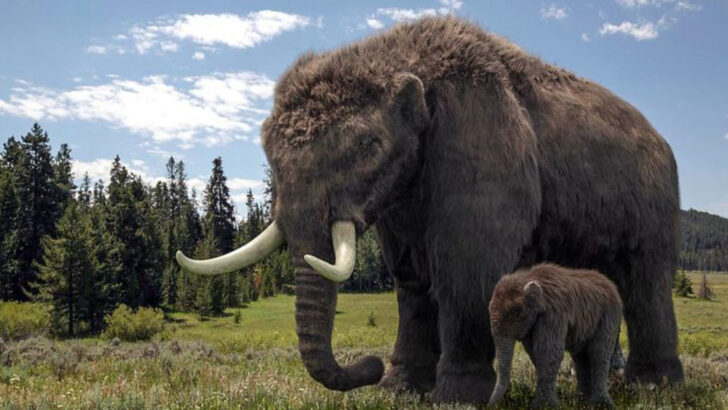Imagine walking outside and coming face-to-face with a sloth the size of an elephant or a beaver as big as a black bear. Sounds unbelievable, right? But during the Ice Age, North America was home to creatures so massive they make today’s wildlife look tiny in comparison.
From towering mammoths to saber-toothed cats with dagger-like fangs, these animals dominated a prehistoric world of freezing temperatures and endless challenges. Some were fierce hunters, others were gentle grazers, but they all had one thing in common—they were huge.
So what happened to these giants? And what would life be like if they were still here? Get ready to step back in time and meet 15 of the most jaw-dropping Ice Age animals that once roamed North America.
Woolly Mammoth
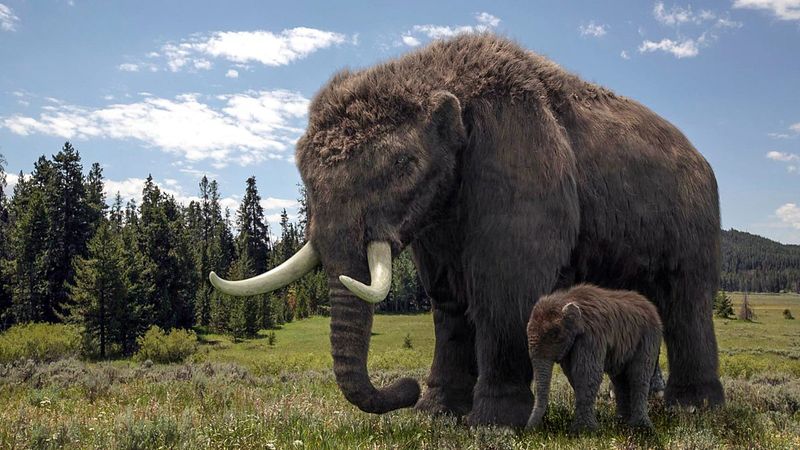
The woolly mammoth was one of the most iconic Ice Age creatures. These massive beings had long, curved tusks and were covered in shaggy fur to withstand the frigid climates. Standing at a towering height, they roamed the northern parts of North America, grazing on grasses and shrubs.
Their social structure was similar to modern elephants, traveling in herds led by a matriarch. Despite their extinction thousands of years ago, they remain a popular subject of study and fascination. The possibility of bringing them back through de-extinction technologies continues to capture public imagination.
Saber-toothed Cat
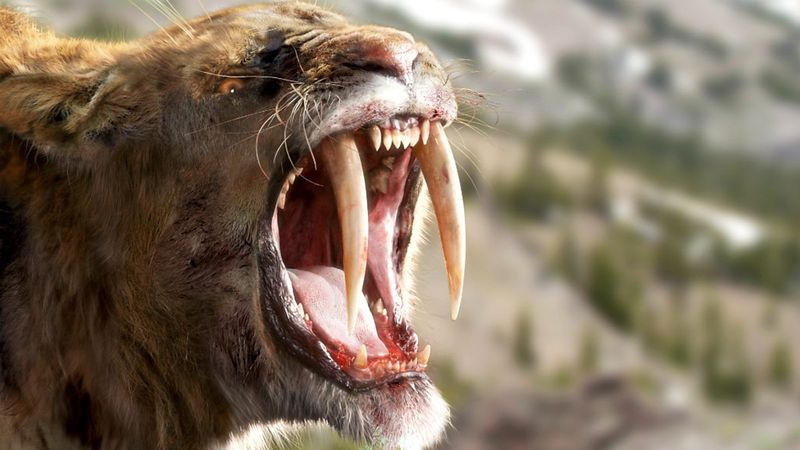
Saber-toothed cats, known for their impressive canines, were formidable predators during the Ice Age. Their elongated teeth made them efficient hunters, preying on large mammals across North America. These cats had robust bodies and muscular forelimbs for grappling prey.
Despite their fearsome appearance, they faced competition for food and habitat. Fossil evidence suggests they lived in various environments, from open plains to dense forests. The extinction of many large prey species contributed to their decline. Today, they are celebrated in popular culture, forever symbolizing prehistoric power and mystery.
Columbian Mammoth
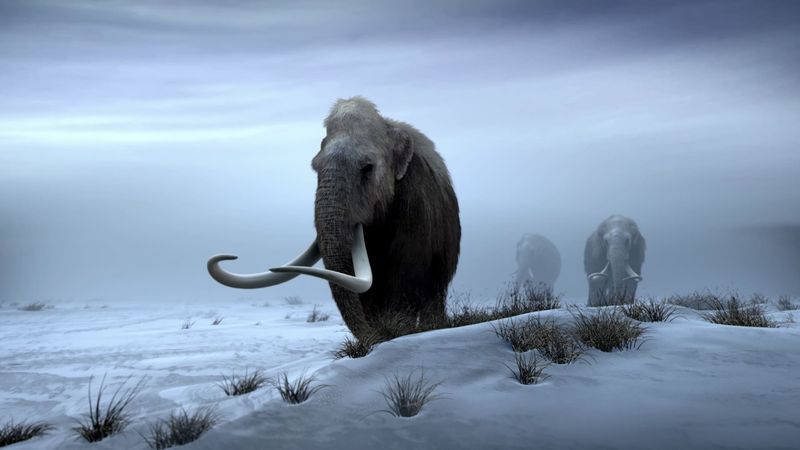
The Columbian mammoth was a relative giant among mammoths, larger than the woolly mammoth, and roamed the warmer regions of North America. With enormous tusks and a less dense fur coat, they adapted to more temperate climates.
These mammoths were expert foragers, using their tusks to dig for vegetation and strip bark from trees. Their presence influenced the ecosystem, shaping the landscape through their grazing habits. Despite their size, they eventually succumbed to hunting pressures and environmental changes. Fossils of Columbian mammoths provide valuable insights into the Ice Age’s diverse ecosystems.
American Mastodon
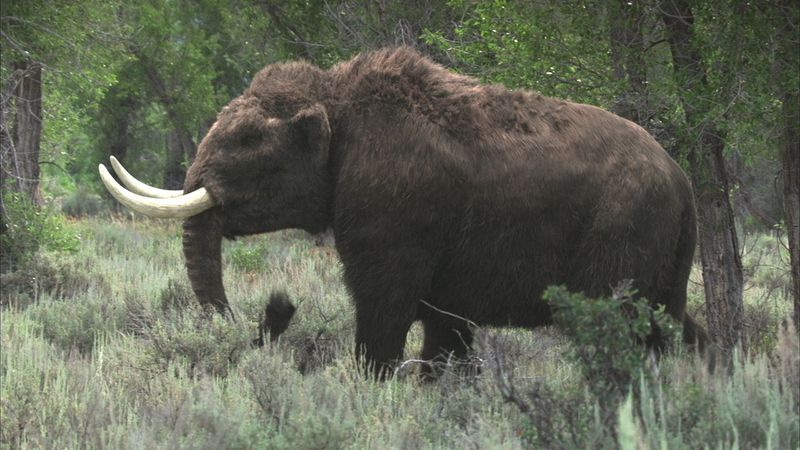
American mastodons roamed across North America, thriving in forested regions. Unlike mammoths, their diet mainly consisted of shrubs and trees. They had a robust build, with straight tusks and a coat adapted to their habitat.
Their presence was significant in shaping the forest ecosystems, spreading seeds through their foraging activities. Sadly, their population dwindled due to a combination of climate changes and human activities. Archaeological finds often reveal their bones alongside human tools, suggesting they were hunted by early inhabitants. Their legacy endures through the rich fossil records they left behind.
Short-faced Bear
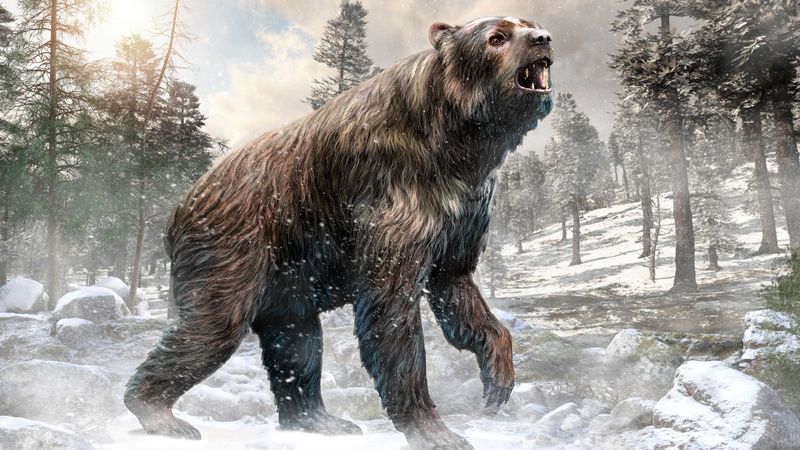
The short-faced bear was one of the largest terrestrial carnivores of its time, with a formidable presence in North America. Known for its broad face and long limbs, this bear was a fast and agile hunter.
Its impressive size allowed it to dominate the ecosystem, preying on large herbivores and competing with other predators. Despite its prowess, the changing climate and loss of prey contributed to its extinction. Fossils indicate these bears lived in diverse habitats, from tundras to woodlands. Their legacy lives on in the folklore and remains studied by scientists today.
Dire Wolf
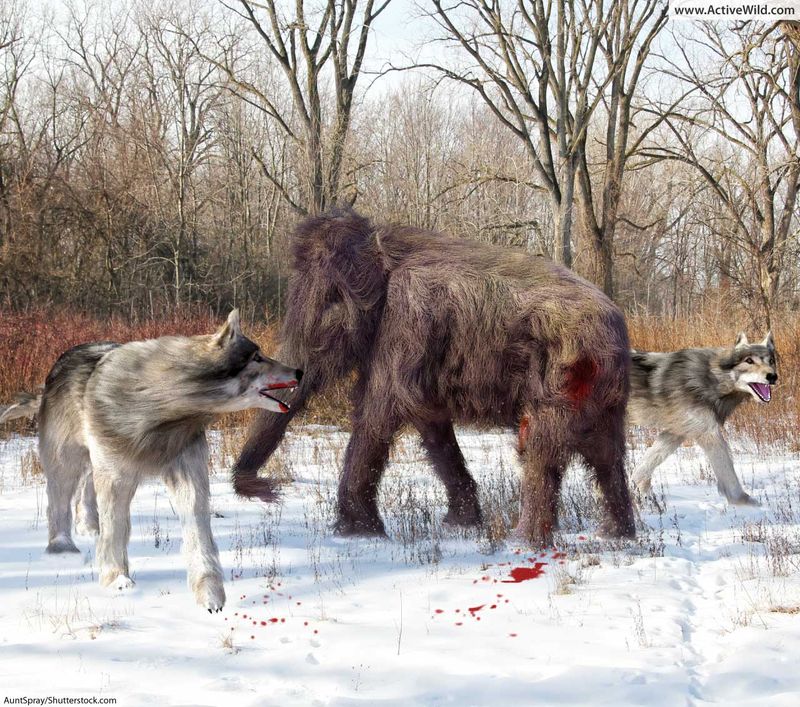
Dire wolves were among the top predators of the Ice Age, known for their robust build and pack behavior. Larger and stronger than modern wolves, they hunted large prey across the diverse landscapes of North America.
Their social structure and cooperative hunting strategies were key to their success. Despite their dominance, dire wolves faced challenges from rival predators and changing environments. Their extinction coincided with the decline of large prey species. Today, they are immortalized in various cultural references, often depicted as symbols of strength and teamwork in the harsh prehistoric world.
Giant Beaver
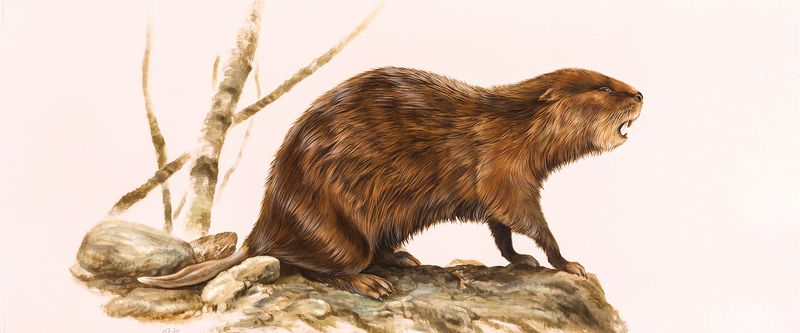
The giant beaver was a remarkable creature, much larger than its modern relatives, thriving in the waterways of North America. With a length of up to eight feet, these beavers built extensive dams and lodges.
Their presence significantly impacted aquatic ecosystems, creating habitats for numerous species. Despite their engineering skills, they faced challenges from climate fluctuations and human expansion. Fossils of giant beavers offer insights into the adaptations of semiaquatic mammals during the Ice Age. They stand as a testament to the inventive nature of ancient creatures in shaping their environment.
American Cheetah
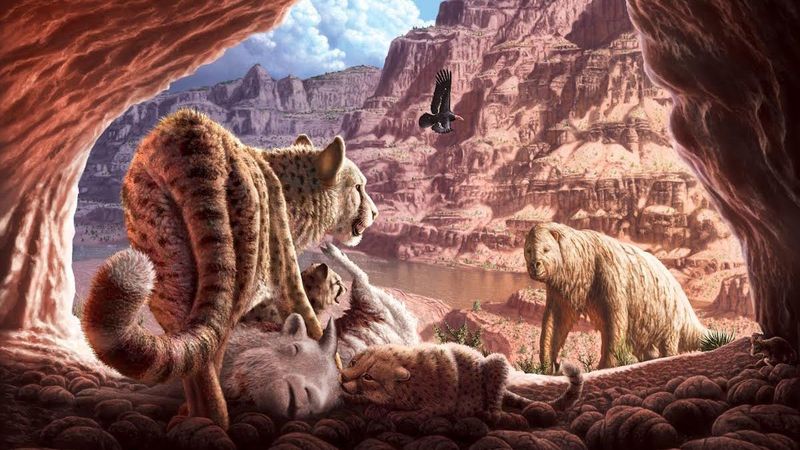
The American cheetah, though not directly related to today’s cheetahs, had similar adaptations for speed. These agile predators roamed the open plains of North America, chasing down swift prey.
Their lean bodies and long limbs enabled them to reach remarkable speeds, making them efficient hunters. However, environmental shifts and competition with other predators contributed to their decline. Fossil records reveal their presence across diverse habitats, emphasizing their adaptability. They are remembered as a symbol of the incredible diversity of the Ice Age megafauna, showcasing nature’s endless innovation.
Megalonyx
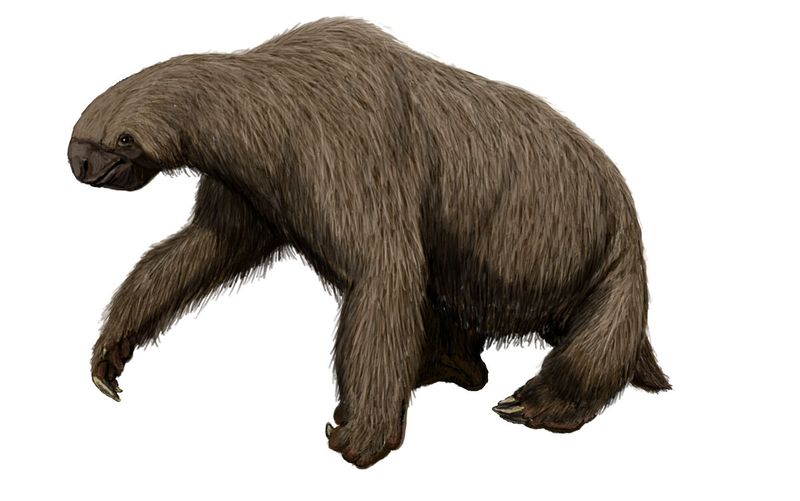
Megalonyx, a type of giant ground sloth, was a dominant herbivore during the Ice Age. Their massive size and long claws were suited for foraging in North America’s diverse landscapes.
These creatures thrived in open woodlands and prairies, feeding on a variety of vegetation. Despite their formidable presence, they eventually succumbed to climate changes and human hunting. Fossils of Megalonyx have been found alongside tools of early humans, suggesting they were an important resource. Their extinction marks the end of an era where such giants roamed freely, shaping ecosystems that are now long gone.
Giant Condor
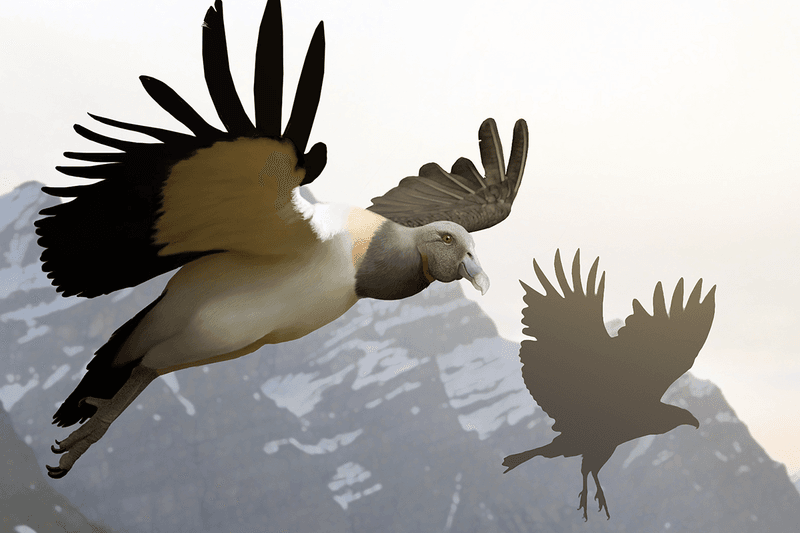
The giant condor was one of the majestic birds of the Ice Age, with a wingspan that rivaled modern vultures. These scavengers played a crucial role in the ecosystem by cleaning up carcasses.
Their keen eyesight and powerful wings allowed them to cover vast distances in search of food. However, as large prey became scarce, so did their food sources, leading to their decline. Fossils of giant condors provide insight into avian adaptations during the Ice Age. They remain a symbol of the vast, interconnected ecosystems that once flourished in prehistoric North America.
Camelops
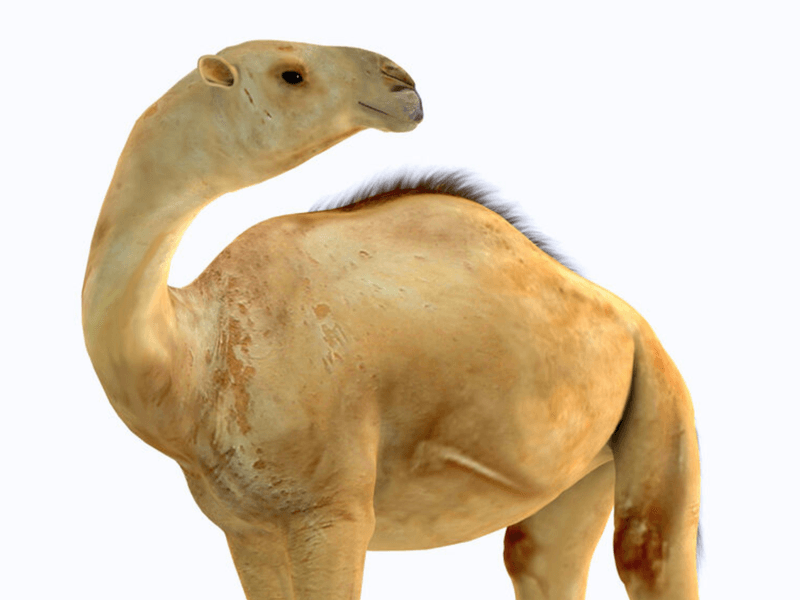
Camelops, an ancestor of today’s camels, were adapted to the diverse environments of North America. These creatures roamed arid regions, using their long legs and humped backs to travel efficiently.
Their diet consisted of various vegetation, including grasses and shrubs, which they expertly foraged. Despite their adaptability, they faced extinction due to climate changes and human pressures. Camelops fossils highlight the evolutionary journey of camels and their crucial role in Ice Age ecosystems. They represent resilience and the intricate balance of life that existed during their time.
Giant Armadillo
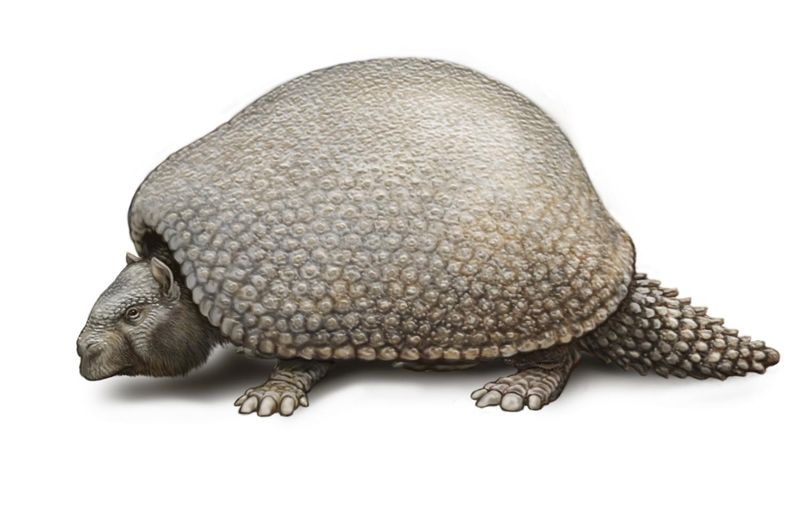
Giant armadillos were among the formidable creatures of the Ice Age, known for their impressive armored shells. These herbivores thrived in the forests and savannas of North America.
Their diet included a variety of plants, and their strong claws were perfect for digging and foraging. Despite their protective armor, they became extinct due to environmental changes and human hunting. Fossils of giant armadillos allow scientists to explore the diversity of prehistoric fauna. They serve as a reminder of the unique adaptations that enabled creatures to survive in the wild landscapes of the past.
Ground Sloth
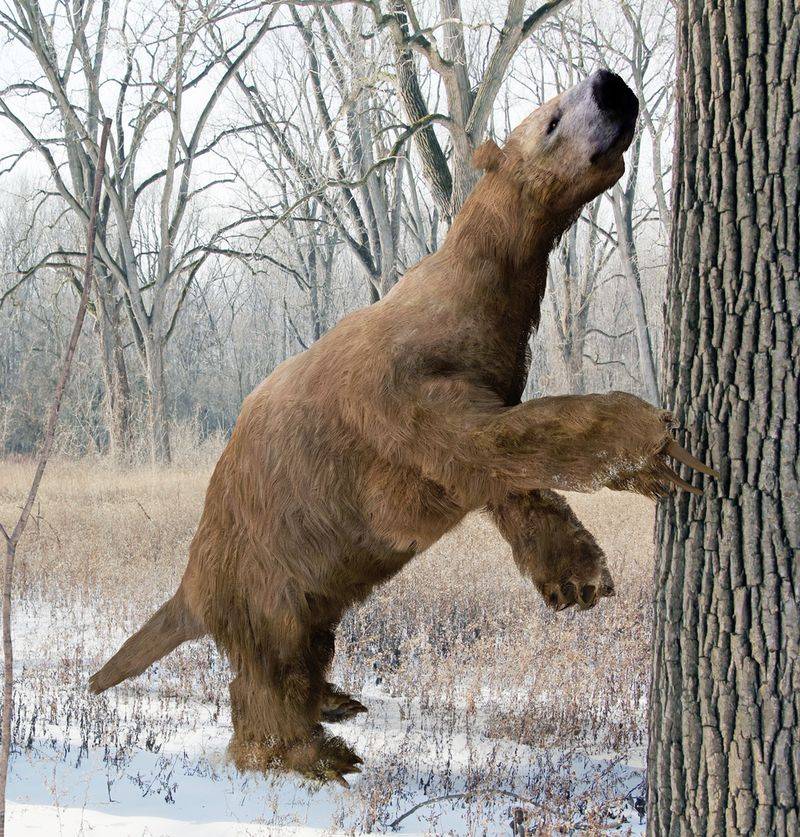
Ground sloths were gentle giants that wandered the landscapes of North America, feeding on a variety of plant life. Their slow movements and large size made them distinct among the Ice Age fauna.
These herbivores played a crucial role in shaping vegetation patterns through their feeding habits. Despite their adaptations, they faced challenges from predators and changing climates, leading to their extinction. Fossils of ground sloths reveal much about the ecosystems in which they thrived. They remain a symbol of the rich biodiversity and complex ecosystems that characterized the Ice Age.
North American Lion
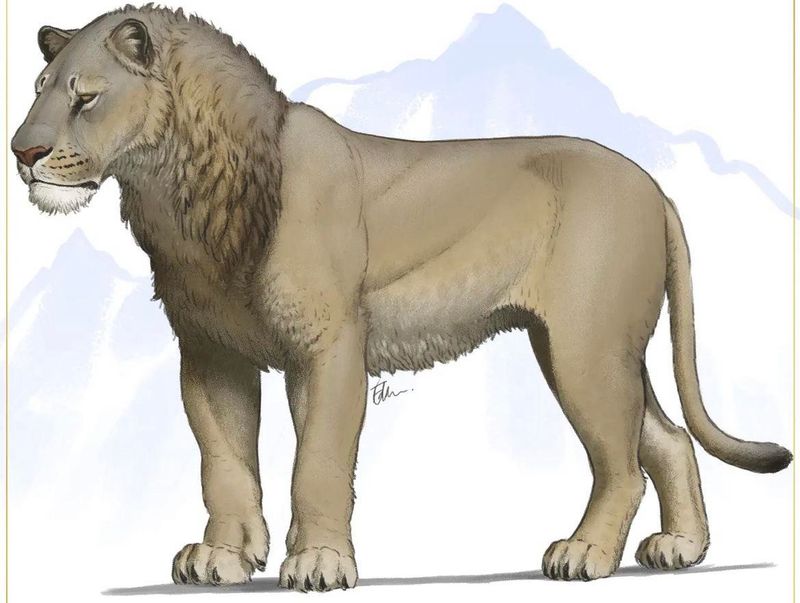
The North American lion was one of the top predators of the Ice Age, known for its strength and agility. Larger than modern lions, they roamed across varied landscapes, hunting large prey.
Their powerful build and keen hunting skills made them formidable in the wild. However, competition with other predators and changes in prey availability led to their decline. Fossil evidence reveals their widespread presence across North America, offering insights into their behaviors and adaptations. They stand as a testament to the majestic predators that once ruled the Ice Age terrain.
Giant Bison
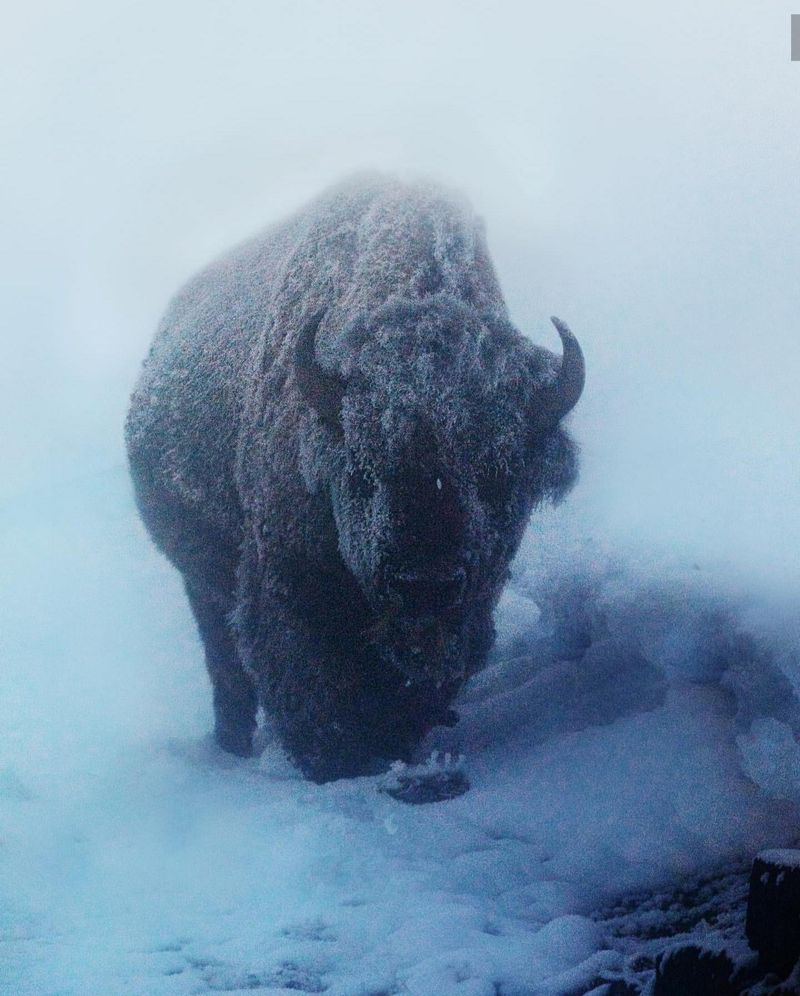
Giant bison were among the most impressive herbivores of the Ice Age, with their immense size and characteristic hump. These creatures roamed the plains of North America, grazing on grasses and shaping the landscape.
Their herds were vast, contributing to the biodiversity of the ecosystems they inhabited. Despite their resilience, they faced extinction due to hunting pressures and environmental shifts. Fossils of giant bison provide a window into the past, revealing the complexity of Ice Age food webs. They continue to be a subject of interest for scientists and enthusiasts alike.

